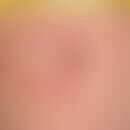HistoryThis section has been translated automatically.
In 1869 (Marx 2005), the Swiss ophthalmologist Johann F. Horner (1831 - 1886) was the first to describe the symptom complex of the Horner syndrome named after him (Stranzenbach 2023).
In the French-speaking world, the physiologist Claude Bernard is considered to be the first to describe and give the syndrome its name, describing it in 1852. However, an experimentally induced Horner's syndrome was produced and correctly interpreted by Pourfour du Petit in animal experiments much earlier, in 1727 (Hopf 2006).
DefinitionThis section has been translated automatically.
The Horner symptom complex includes symptoms caused by damage to the sympathetic pathway:
- miosis
- ptosis and
- enophthalmos (Herold 2020).
Some authors also include anhidrosis as an inconstant feature (Kasper 2015).
You might also be interested in
ClassificationThis section has been translated automatically.
Depending on the location of the damage to the sympathetic pathway, a distinction is made between central, preganglionic and peripheral Horner's syndrome:
- Central Horner's symptom complex:
Here the focus of the disease is in the brain stem. As a rule, there is also a disorder of sweat secretion in the ipsilateral half of the body (Buchner 2007).
- Preganglionic Horner's symptom complex:
In preganglionic Horner's syndrome, the lesion is found in the spinal segments C8 to Th2. However, sweat secretion is not disturbed (Buchner 2007).
- Postganglionic or peripheral Horner's symptom complex:
This is a lesion in the stellate ganglion itself or peripherally associated with a quadrant-shaped anhidrosis (Buchner 2007).
Congenital Horner's syndrome:
In this case, emotional and thermoregulatory facial flushing is absent on the affected side in infancy and early childhood, known as the "Harlequin sign" (Berlit 1999).
Fresh Horner's syndrome:
In fresh Horner's syndrome, parasympathetic innervation of the ipsilateral extracranial blood vessels may result in hyperemia of the conjunctiva and eyelid (Berlit 1999).
Intermittent Horner's syndrome:
This occurs very rarely and is caused by disc slippage in the cervical spine or intermittent compression of the hypothalamus (Hopf 2006).
Double-sided Horner's syndrome:
This is also very rare and is usually associated with other prominent symptoms (Hopf 2006).
EtiopathogenesisThis section has been translated automatically.
Horner's syndrome is caused by a lesion of the sympathetic nerve pathways (Buchner 2007).
It can occur as part of the following diseases/disorders:
- 1. central Horner's syndrome:
- Infarction, hemorrhage or tumor in the hypothalamus
- Infarction, hemorrhage or tumor in the brain stem
- Cervical tumor
- Syringomyelia
- 2. preganglionic Horner's syndrome:
- Cervical or thoracic root lesion
- Plexus palsy
- Paravertebral tumor
- 3. postganglionic Horner's syndrome:
- Lesion of the carotid artery
- Trauma, tumor or inflammation in the area of the carotid plexus
- Cluster headache (Buchner 2007)
- Pancoast tumor (Herold 2020)
- Injury to the brachial plexus (Kasper 2015)
- Dissection of the carotid artery
- Neuroblastoma
- Thyroid carcinoma
- Injuries to the thoracic spine / cervical spine
- Stellate blockade
- Wallenberg syndrome (Stranzenbach 2023)
PathophysiologyThis section has been translated automatically.
Trauma or infarcts etc. can lead to damage to the stellate ganglion. The resulting paralysis of the smooth muscles of the eye innervated by the sympathetic nervous system leads to the occurrence of Horner's syndrome (Stranzenbach 2023).
Miosis: The width of the pupil depends primarily on the activity of the parasympathetic fibers. If there is a blockage of the sympathetic nervous system in the stellate ganglion, this leads to a constriction of the pupil and the palpebral fissure. However, the pupillary reflex typically remains intact (Stranzenbach 2023).
ClinicThis section has been translated automatically.
- Recession of the eyeball (enophthalmos) due to failure of the orbital muscle. However, the latest sources describe enophthalmos as an artifact, since in the presence of ptosis there is only a retraction of the globe.
- Small pupil (miosis) due to failure of the dilator pupillae muscle. The anisocoria is just under 1 mm in most cases and only rarely reaches 2 mm.
- Narrow palpebral fissure (ptosis) due to loss of the tarsalis superior muscle. The ptosis reaches values of approx. 2 mm. In approx. 10 - 15 % of those affected, however, the narrow palpebral fissure is completely absent.
- Homolateral hypo- or anhidrosis of the face and neck (Kasper 2015 / Stranzenbach 2023 / Marx 2005)
DiagnosticsThis section has been translated automatically.
The diagnosis is usually made by visual diagnosis (Stranzenbach 2023).
As central Horner's syndrome rarely occurs as an isolated syndrome, imaging should be carried out using a cerebral or cervical MRI (Buchner 2007).
The following tests can be carried out to differentiate between the Horner symptom complex:
- Test with 4 % cocaine eye drops:
The introduction of cocaine into the conjunctival sac leads to a strong dilation of the pupil in the presence of central Horner's syndrome, whereas there is no pupil dilation in peripheral Horner's syndrome (Delank 2004).
- Examination of sweat secretion:
A test of sweat secretion in the ipsilateral neck, face and arm area with a positive result with quadrant-shaped anhidrosis indicates that the damage must be in the stellate ganglion itself (Delank 2004).
The examination of sweat secretion in peripheral Horner's syndrome is negative if the lesion site is proximal to the border cord in the roots C8 - Th2 (Delank 2004).
In upper quadrant anhidrosis without Horner's syndrome, the damage is found in the border cord caudal to the stellate ganglion (Delank 2004).
TherapyThis section has been translated automatically.
To date, there are no controlled studies on therapeutic options (Urban 2009).
LiteratureThis section has been translated automatically.
- Berlit P (1999) Clinical Neurology. Springer Verlag Berlin / Heidelberg 359 - 361
- Buchner H (2007) Neurological guiding symptoms and diagnostic decisions. Georg Thieme Verlag Stuttgart / New York S 8 - 11
- Byrne J H et al (1998) Neurology: Manuel et atlas. De Boeck Diffusion Bruxelles 68
- Delank H W, Gehlen W (2004) Neurology. Georg Thieme Publishers Stuttgart / New York 123
- Herold G et al (2020) Internal medicine. Herold Verlag 402
- Hopf H C, Diener H C, Deuschl G, Reichmann H (2006) Diseases of the cranial nerves. RRN- Reference Series Neurology - Clinical Neurology. Georg Thieme Verlag Stuttgart 55 - 56
- Kasper D L et al (2015) Harrison's Principles of Internal Medicine. Mc Graw Hill Education 122, 176, 208, 510
- Marx J J et al. (2005) Horner's syndrome- An update on neuroanatomy, topographic differential diagnosis and etiology. Fortschr Neurol Psychiatr 73: 23 - 29
- Stranzenbach R et al (2023) Horner's syndrome. DocCheck Flexicon
- Urban P P (2009) Diseases of the brain stem: Clinic - Diagnostics - Therapy. Schattauer Verlag GmbH Stuttgart 127
Disclaimer
Please ask your physician for a reliable diagnosis. This website is only meant as a reference.




